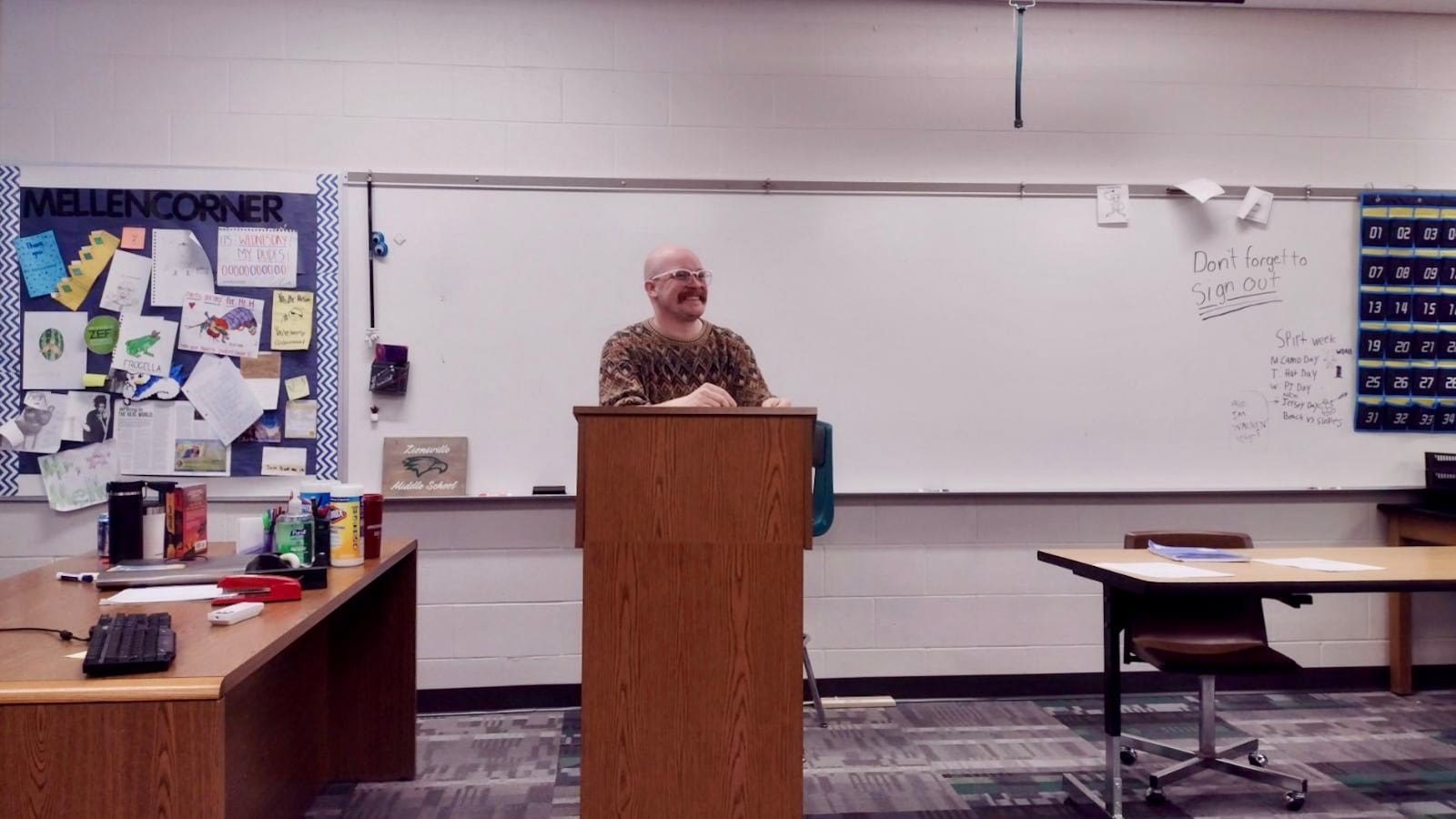I’ve struggled with anxiety and depression for as long as I can remember, but I really became aware of it in middle school. Seventh grade was an especially challenging year. I can still remember the worry, stress, tension, and panic attacks. Every little thing felt like a huge deal. I was scared to embarrass myself around my peers. A “D” on a test felt like the end of the world.
Back then, in the mid-2000s, the mental health field wasn’t what it is today, especially in the small, rural town of Berne, Indiana, where I grew up. Most of the adults I talked to about my problems didn’t seem to understand what anxiety and depression were, and neither did I. By every external measure, I had a great life with a loving family that provided for my every need. So why did I feel so sad? What did I have to worry about when there were people out there with “real” problems?

In my early 20s, I gave therapy a shot, and it really helped me understand what I was feeling. I finally had a diagnosis of anxiety and depression, and just the simple act of being able to put a name to my feelings made them so much more manageable. Through the combined power of many factors — therapy, medication, diet, exercise, mindfulness, and journaling — I finally learned strategies that helped me manage my anxiety and depression in healthy ways.
By the time I received my diagnosis, I was teaching seventh grade. In the classroom, I noticed some all too relatable behaviors in my students. There was the kid in tears because they got a B on an assignment. There was the kid in a full-on panic because they had an essay due … in two weeks. And who could forget the kid who just couldn’t decide what college to attend and what career to pursue, even though he was only 12?
It’s important to remember that these kids are still learning how to manage a locker, keep track of seven classes a day instead of staying in one, and navigate peer relationships. They have sports and other extracurricular activities taking up hours of their time every day. They have homework. They have tests. They have the expectations of their parents and teachers to live up to. They have the specter of college and adulthood looming over them. And that’s all on top of a whole lot of brand new emotions that come with becoming an adolescent.
Thanks to my own mental health journey, I am able to share with my students some of what I’ve learned about managing emotions and self-soothing. Sometimes that looks like taking a lap around the hallway. Other times, it may mean pausing for some deep breathing exercises.
I know what a difference these strategies can make. Because even now, sometimes I’ll sit down at my desk to do some lesson planning, and my anxiety will make itself known. There’s a tightness in my chest, and it feels like the blood is coursing through my veins a little bit faster. Oh man, students have their personal narratives due soon. I also have to get them ready for that vocab test. And after that, I’d better make sure they’re reading their library books so they’re ready for their upcoming project.
By the time I received my diagnosis, I was teaching seventh grade.
How am I supposed to juggle all this? Wait a minute, I remind myself. I’m the adult. I’m the teacher who assigned all this stuff in the first place. If am feeling this overwhelmed, then how must the kids feel right now having to juggle this work, their six other classes, and their lives outside of school?
In beginning-of-the-year professional development meetings, I’ve been told that our job as teachers is to bring 110% to the classroom every day. Regardless of what’s going on in our personal lives, once we enter our classrooms, we should put on a smile and a brave face. But when I hear that advice, I think back to my middle school self, confused by my emotions and not knowing anyone who seemed to be going through the same things.
Children and teens need representation, and that includes the area of mental health.
That’s why I’m transparent with my students about my anxiety and depression. I want my students who are struggling to know that there is an adult in their lives who can relate. I want all of my students to see a positive role model in someone with a mental illness who is successful and cares about them.
Should the topic of mental health come up in class, as a result of a book we’re reading or in a student’s writing, I don’t shy away from it. Sometimes, I encourage them to use their Free Write Fridays to vent about what’s on their minds. Other times, I offer to help them break down overwhelming tasks into smaller, more manageable pieces.
In the same way that we seek to create a more equitable world by ensuring teachers, libraries, and curricula have diverse representation, I think visibility when it comes to mental health also makes a difference. Showing that we can exist with the full range of human emotions and still thrive teaches kids that it’s OK to be human. It teaches them that it’s possible to excel while embracing our whole selves.
Many of my students with anxiety and depression tell me they feel seen when I open up to them about my own challenges. I’ve received heartwarming emails from students who are now in high school, thanking me for making middle school a bit easier to manage. I’m grateful for their candor. And I’m grateful that they live in a world with more mental health resources — and less mental health stigma — than there was when I was their age.
Blake Mellencamp is a language arts educator and freelance writer. He is currently the middle school chair for the Indiana Council for Teachers of English and a teacher-consultant for the Indiana Writing Project.


